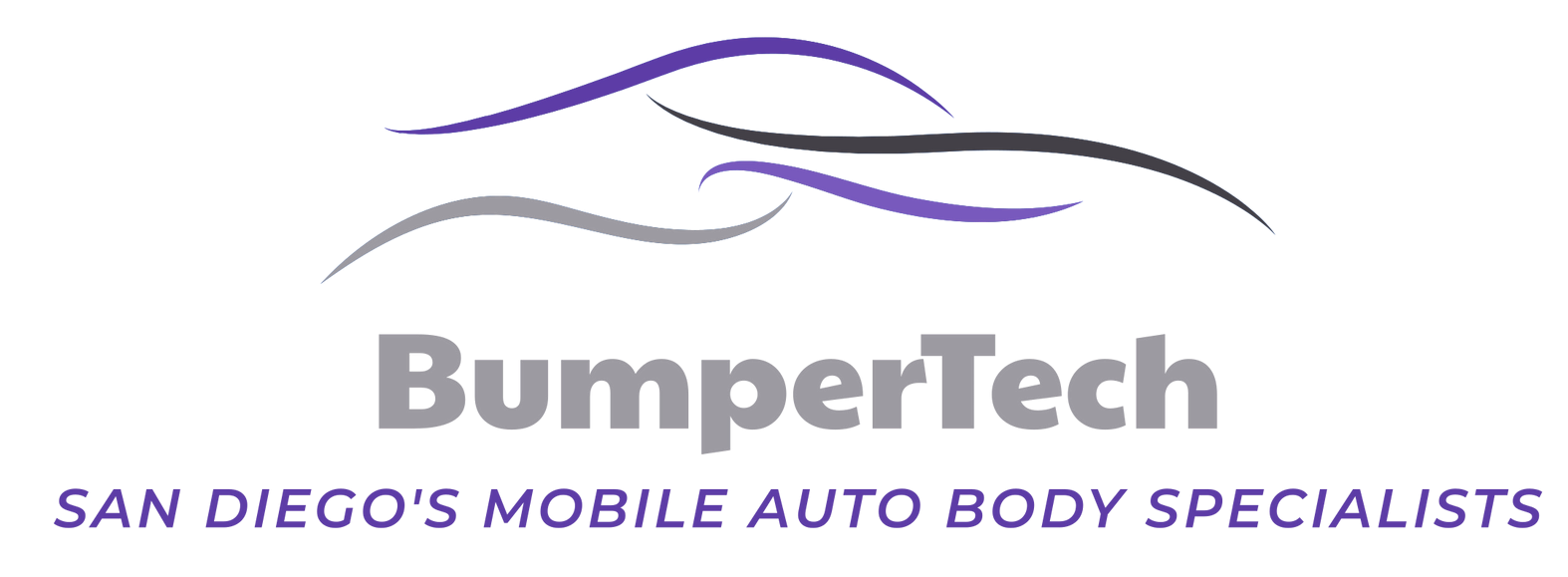Small To medium Repair Technique - our process
How Small To Medium Area Repair Technique (SMART) Works for Auto Body Repair
The
Small To Medium Area Repair Technique (SMART)
is a specialized method used in the automotive industry to repair small to medium-sized damages on a vehicle's body. It is designed to be a cost-effective and efficient approach for fixing minor dents, scratches, and other superficial damages. SMART repairs are commonly used for repairing damage to panels, bumpers, alloy wheels, and other areas on the vehicle's exterior.
Here's how SMART repair from Bumpertech generally works:
1. Assessment
A skilled technician first inspects the damage to determine if it is suitable for SMART repair. Generally, SMART repairs are limited to damages that are small in size and don't affect the structural integrity of the vehicle.
2. Surface preperation
The damaged area is thoroughly cleaned to remove any dirt, debris, or contaminants. This step is essential to ensure proper adhesion of the repair materials and a smooth finish.
3. Repair Process
DENT REPAIR
For small dents, the technician may use techniques like paintless dent repair (PDR), where specialized tools are used to carefully massage the dent out from the inside of the panel, without the need for painting.
Scratch Repair
The damaged area is thoroughly cleaned to remove any dirt, debris, or contaminants. This step is essential to ensure proper adhesion of the repair materials and a smooth finish.
Bumper repair
Minor bumper damages, like scuffs and cracks, can be repaired using specialized adhesives, fillers, and sanding techniques. This helps to restore the bumper's appearance and structural integrity.
Alloy wheel repair
Scratched or scuffed alloy wheels can be refurbished by sanding down the affected area, applying paint and clear coat, and then polishing to match the original finish.
4. paint matching
If painting is required, the technician will carefully match the vehicle's color using specialized color-matching tools and techniques. This ensures that the repaired area blends seamlessly with the rest of the vehicle's body.
5. paint application
The paint is applied to the repaired area in thin layers, allowing each layer to dry before adding the next one. This process helps to achieve a smooth and flawless finish.
6. Clear coating & final finishing
To protect the repaired area and provide a glossy finish, a clear coat is applied over the paint.
After the paint has dried and cured, the repaired area is polished and buffed to blend it with the surrounding surfaces and to achieve a uniform appearance.
7. quality check
The final step involves a thorough inspection of the repaired area to ensure that the SMART repair has been completed to a high standard.
Are you ready to repair your vehicle?
SMART repairs are favored for their efficiency and cost-effectiveness compared to traditional auto body repair methods. However, it's important to note that SMART repairs are suitable only for minor damages, and more significant structural or extensive bodywork damages may require conventional auto body repair techniques.
CONTACT US
Mailing Address
10717 Camino Ruiz, Suite 131
San Diego, Ca 92126
We are mobile & serve all of San Diego and Orange counties.
Have a question or comment? Let us know.
All Rights Reserved | Bumpertech | Web Design by GoBeRewarded
